Remy and I started a basic, beginning dog agility class, and I’m going to share the criticism Remy’s trainers gave us. These actually have very little to do with agility, but they’re helpful for communication and training in general.
I thought many of you would be interested in hearing these ideas and that you’d be able to benefit as well.
This just goes to show how helpful it can be to have a trainer observe you and your dog or even for you to video record yourself working with your dog. It can be eye opening!
Basic dog agility – six things we need to work on
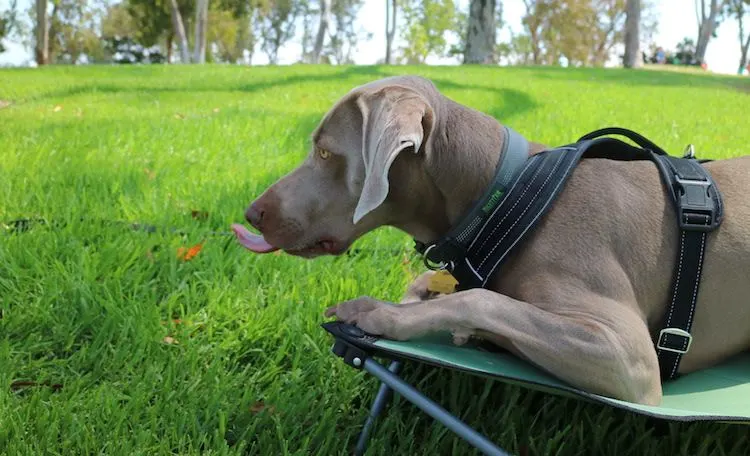
Notice these six items have very little to do with agility obstacles and more about communication!
You could apply these to almost any training you do with your dog. Let me know if any of these apply to you and your dog no matter what kind of dog “sports” or training you do – nosework, obedience, hiking, flyball, rally, hunting, etc.
1. Impulse control in agility and beyond.
Impulse control is important for all dogs, not just agility dogs.
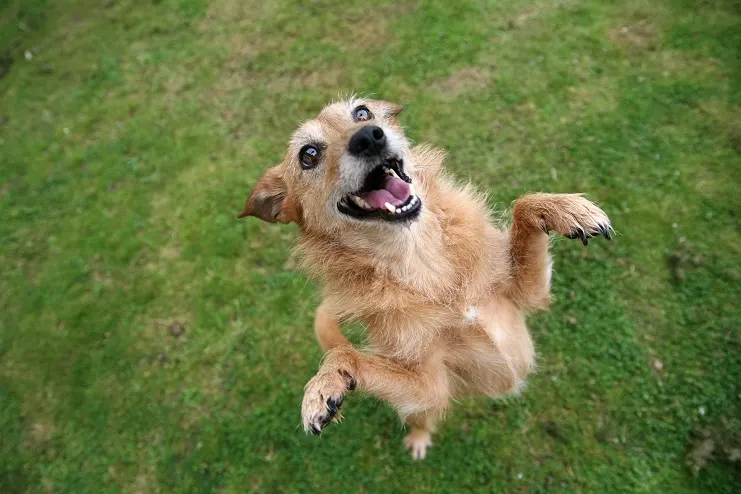
Remy’s lack of self-control is obvious. He jumps on people, snatches treats and can be quite the menace!
In agility, this became instantly obvious to our trainers because Remy was fixated on my hands and biting me obsessively to take the treats. I’m so used to this behavior from him that it doesn’t even bother me, but the trainers quickly reminded me to get this under control.
The easiest way to work on impulse control with Remy is to hold out a treat in my fist and to not give it up until he stops biting my hand AND moves away. He catches on extremely quickly to this concept but it’s something he needs work on regularly so he learns he can’t get away with this.
For tons of info on impulse control, see my post: How to increase my dog’s impulse control
2. Too dependent on treats during training.
Again, this applies to all types of training and goes beyond agility. Use the food to reward your dog for structured work, not to raise his excitement off the charts!
In agility practice, we were doing an exercise where we were teaching our dogs to run in a simple Figure-8 pattern around two barrels off leash. I was dependent on holding treats in my hand so I could “lure” Remy where I needed him to go. He’s a treat magnet, after all!
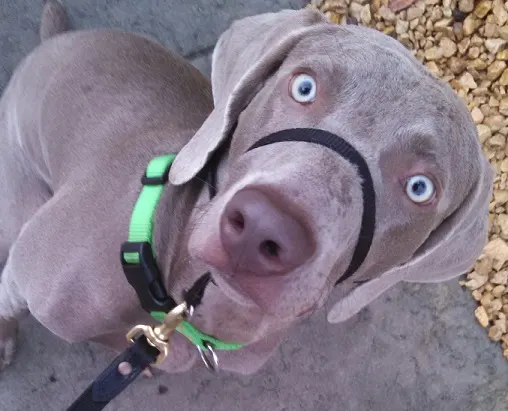
One trainer immediately pointed out, “Stop holding treats! No treats in your hand!” The reason for this was because my dog was obsessing over the food, biting my hands and not thinking through the problem.
Instead, she told me to ask him to do the pattern by guiding him with no treats in my hands. Then, after he did the exercise correctly, tell him “Yes!” and reward with a treat from my treat pouch.
Literally the very first time I did this without treats in my hand, Remy performed it perfectly. The difference was night and day, and it showed my dog is smart and capable if I make him work for it. It also showed me that I’ve been letting him get away with a lot of immaturity!
I’ve written before about how I’ve felt frustrated by “all positive” trainers because the constant shower of treats and praise gets my hyper dog even more hyped up! You have to find the right balance that works for your unique dog.
3. The dog’s lack of “back end” awareness.
In agility, you hear this a lot – dogs meed to be “aware” of their bodies and that means their back legs too.
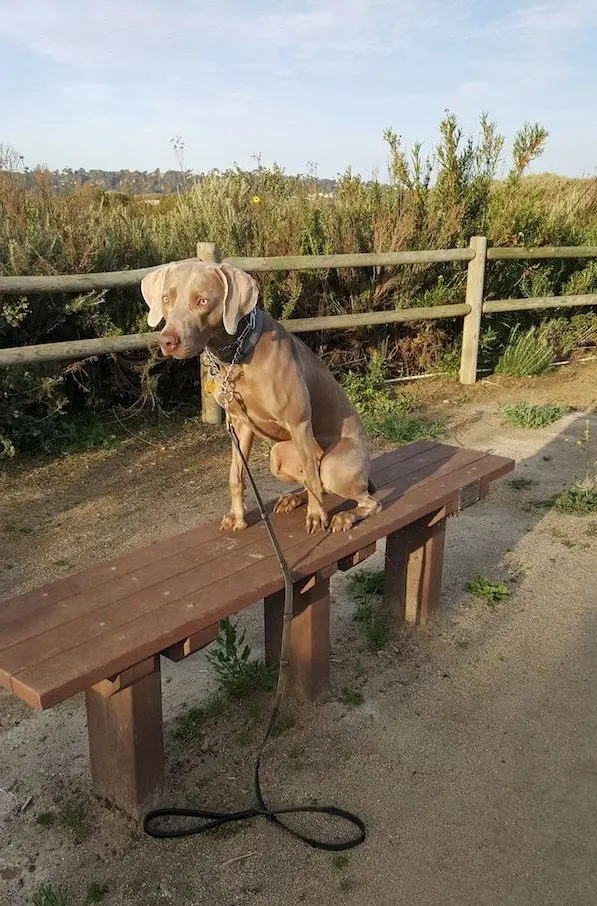
For example, when Remy was asked to walk across a long, narrow board to get the treat on the opposite end, his back legs went flying off the board! He simply had no concept of keeping them coordinated.
His trainers had some suggestions for us such as asking him to stand on small, flat obstacles like plastic lids and boxes. I reward him when all four paws are on the “target” and then we can work with smaller and smaller “targets.” I can also teach him to put just the front paws on the target or just the back paws (much more challenging!).
Remy does know the command “back up” which will be extremely useful for working on his awareness. For example, I can ask him to “back up” when we’re standing at the bottom of the stairs so only his back legs will be on the bottom step.
Since Remy and I need a lot of work on his “back end awareness” I searched for a video with some examples. Here it is below:
4. Too dependent on dog training collars.
We can all be too dependent on whatever training tools we use.
None of the agility trainers pointed this out, but I realized it on my own. Since agility is done mostly off leash, we are encouraged not to use training collars like choke collars or Gentle Leaders so I brought Remy on his flat collar.
Remy is strong and I almost always use a no-pull harness or a prong collar with him. Judge away. It’s what I do to keep my dog safe and controlled!
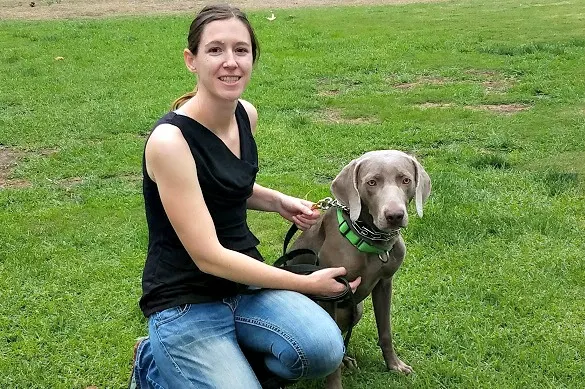
In agility, I have had to learn to keep my dog’s attention on me WITHOUT depending on any training collar, and that is a real challenge.
We’ve already been doing off-leash exercises in agility, and Remy is the type of dog to get fixated on sniffing some random spot on the ground or eating the dirt (seriously!). So, I have to be more interesting than all of these amazing smells!
To get Remy’s attention, I use high-valued treats in a structured way (not depending on them either!) and I use my voice and movement to be more interesting!
To get more practice with this, I’m going to take him outside on a long 30-foot leash and see if I can keep his focus on me by using only food, praise and movement. No training collar and no stepping on the leash unless it’s an emergency.
5. Same command – different context in agility vs. obedience.
Our teachers pointed out that dogs can totally understand that a command has different meanings in different contexts.
For example, in obedience training, “Remy, come!” means “come and sit in front of me.” In agility training, “Remy, come!” means “move over here in this general direction.”
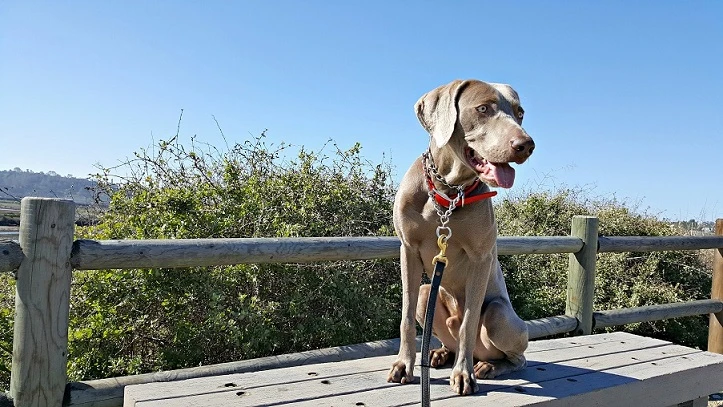
Sure, I could choose two different commands for the two different contexts but our trainers suggested this was totally unnecessary. Your dog would understand the difference, they said, and I think they’re totally right.
So, instead of complicating things by using two different commands, I’m going to stick with “come” and it will have slightly different meanings depending on context.
6. Stand up straight in agility and look ahead!
OK, this one really is pretty agility specific. Even though I have a big dog, I’m constantly bent over at his level and apparently I stare at him! And I didn’t even realize I was doing this!
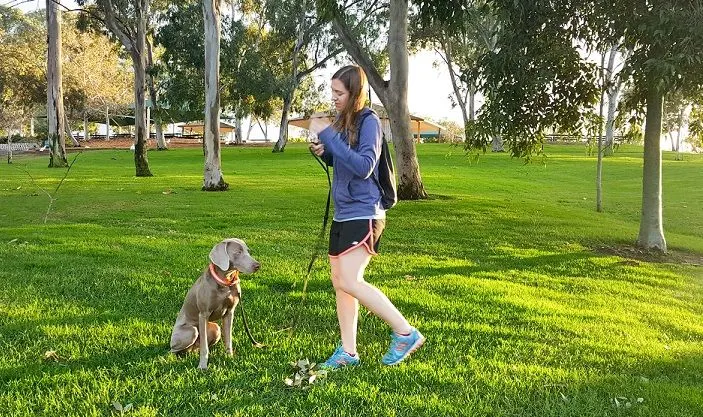
People who have small or short dogs are more likely to be bent over when trying to communicate with their dogs and our instructors told all of us we should work on standing up straight and focusing on looking up ahead to the next obstacle.
Our dogs will learn to follow our lead and to head where we’re looking. If we’re bent over and staring at them all the time, we’re actually holding them back since we’re not leading them where we want them to go.
So, stand up straight! Look ahead! (And keep close watch on your dog out of your peripheral vision!)
OK, notice those six items had very little to do with agility!
Can you relate to any of the above?
Let me know if any of these apply to you and your dog no matter what kind of dog “sports” or training you do – nosework, obedience, hiking, flyball, rally, hunting, etc.
Also, if you’ve learned about something you need to change with your training, let me know what that is!
Related article:
When to start a puppy in agility?
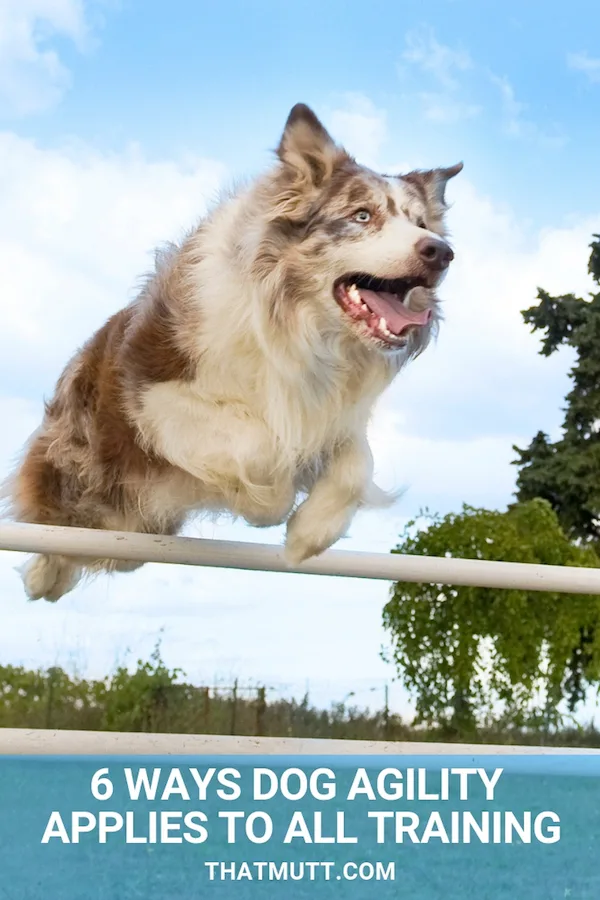

Carol (Mattie's Mom)
Wednesday 9th of December 2020
We set up an agility 'ring' in our backyard (3 dogs back). Currently, we are still doing a bit outside, but soon it will be over until spring. Our Mattie has impulse control issues. There are certain obstacles that she likes and it is easy to get her started on a course, but other times, she ignores me and if I have to say 'no', that sets her off into a zoomie run. She gets treats at the end of a 'run', but I don't need to be holding them all thru the run; thanks for that suggestion. Also, it was a good reminder about posture. Unfortunately, we only have the one fenced in area, so it is also her 'play' area where we 'squirrel' (thrown like a frisbee), which she loves. Generally, we start with some agility, and then I reward with a few throws. If it is a 'good' day, she will come when I call her to do more agility followed by more squirreling (I need a rest between runs); if not, ... Mattie has learned the obstacles well and has no fear; hopefully, the bonding will come as it did for our previous dogs.
Carol (Mattie's Mom)
Saturday 20th of November 2021
@Lindsay Stordahl, I recently figured out that we can not 'play' in our agility ring. Mattie would ignore me until I got out the ball, which I was using to lure her to do agility. It took a few days, but she is 'working' much better doing agility. I play ball with Mattie on a 50 foot rope. Also, when she has had a good work and play time, she is rewarded back in the house with a rawhide bone (not sure if she has put this all together yet). Mattie will be 3 years old next month. We were once told that she would never be a cuddle dog. No so, she cuddles with both my husband and me. Thanks for your posts.
Lindsay Stordahl
Thursday 10th of December 2020
I bet you've made a lot more progress than you realize! My dog challenges me in so many ways too and I find it is rewarding to work with him ... in the long run. Frustrating in the moment sometimes though! Haha.
Heather
Tuesday 27th of November 2018
Really great info! I have to laugh because my Jake is such a goofball and has no concept of his "back end"... which is hilarious but not so helpful for training or agility. Unfortunately Jake will never be the type of dog who could excel at agility. I only wish I had gotten my Charlie more involved in this at a younger age when she would have really shined!
Carol Bryant
Monday 26th of November 2018
Great post. My Dexter has 3 titles: CGC and two trick dog titles from the AKC. I found it helped us bond early on and I love that I can rely on him when things happen in life. It gives dogs confidence, too.
The Dash Kitten Crew
Sunday 25th of November 2018
This is fascinating. There is a lot of teamwork involved with owner and dog working as a team so ensure the right signals get the right interpretation.
Don't anyone ever tell dog owners that agility and training are easy, it takes Two!
Sweet Purrfections
Sunday 25th of November 2018
Very interesting! This is the second blog post I've read this weekend about back end training for dogs. I had no idea what this meant, but your post explained it for me.